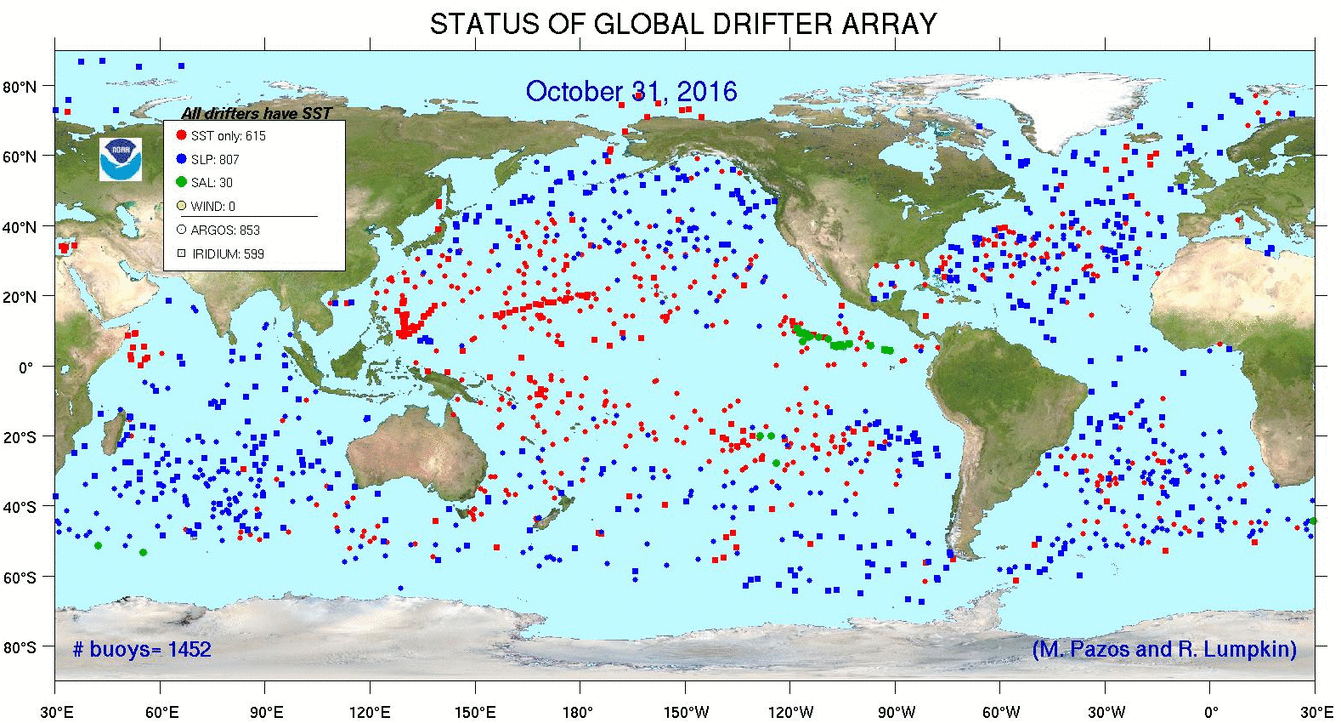Transition of the Global Drifter Array from Argos to Iridium transmissions
NOAA's Global Drifter Program is transitioning the array from Argos to Iridium, and including the newer Iridium data in its quality-controlled data set.In order to provide global data with delays of only a few minutes and to realize significant cost savings, the Global Drifter Program (GDP) announced in March 2014 that the array of satellite-tracked drifters would transition from Service Argos to Iridium. The first milestone of this transition is to reach an array that is 80% Iridium by 30 September 2018.
Because Iridium does not provide accurate locations (unlike Argos), all Iridium drifters include GPS. As noted in the 2016 Data Buoy Cooperation Panel meeting by Erik Valdes of the GDP Data Assembly Center (DAC), GPS time-to-first-fix provides an extremely robust indication of drogue presence, meaning that this can now be evaluated much more rapidly than previously possible.
As of 31 October 2016, the array was 41% Iridium and 59% Argos, while last year at this same time, it was 30% Iridium and 70% Argos. Simulations by Rick Lumpkin, AOML PI of the GDP, indicate that the Iridium percentage will rapidly increase through FY17 because all major drifter manufacturers now exclusively produce Iridium drifters. Shaun Dolk of the GDP Operations Center arranges to have these drifters deployed worldwide to replace Argos drifters currently in the array.
Mayra Pazos, manager of the GDP DAC, has lead the effort to incorporate Iridium data in the delayed mode, quality controlled data sets generated by the DAC. Pazos and Valdes are also responsible for assigning WMO identification numbers to all drifters (Iridium and Argos) for data insertion on the Global Telecommunications System (GTS), to ensure that the data are transmitted on the GTS as soon as possible, and to stop GTS insertion when the data are no longer reliable.

Map of the global drifter array on 31 October 2016. Squares indicate Iridium drifters, while dots indicate Argos drifters.